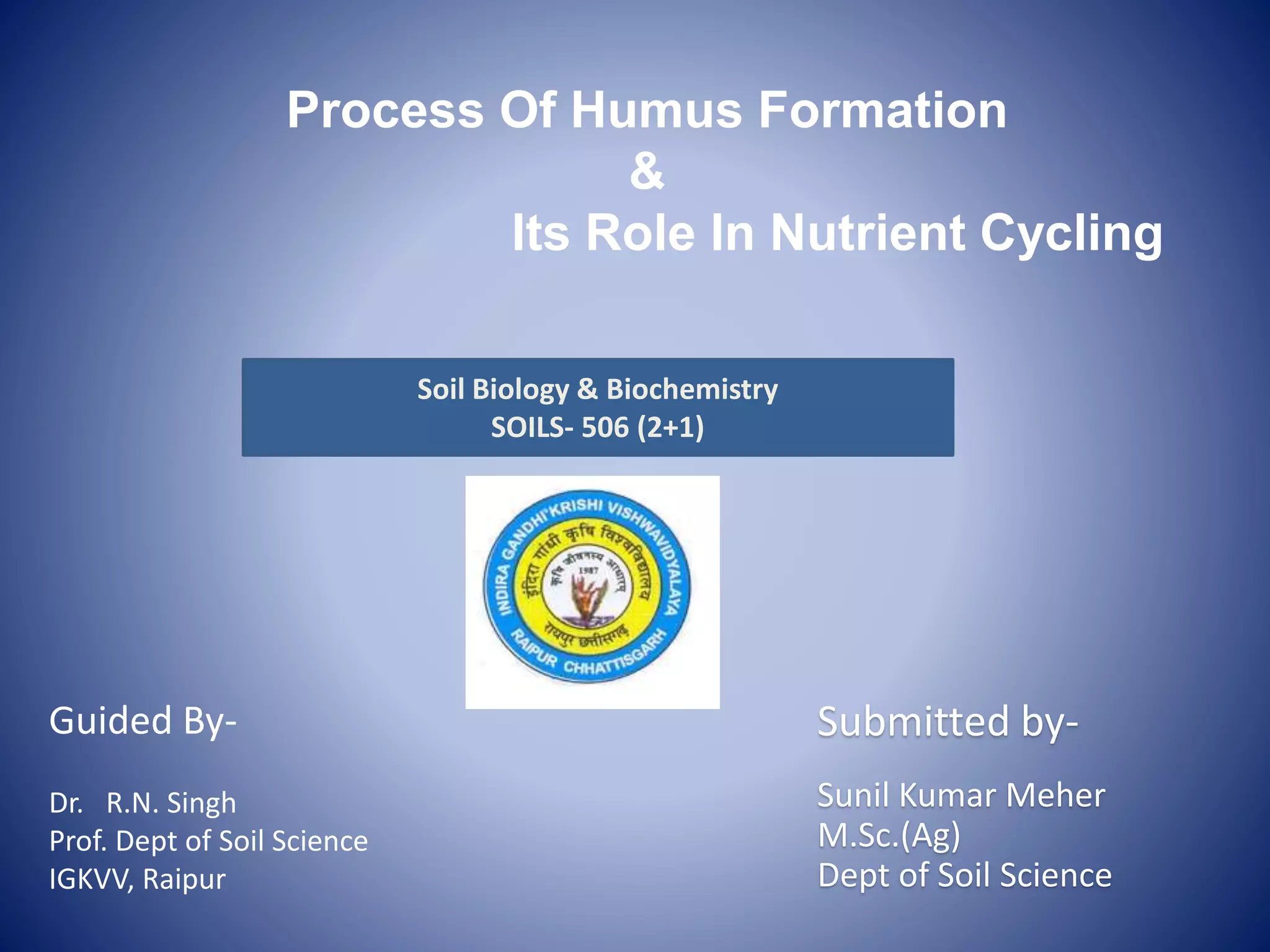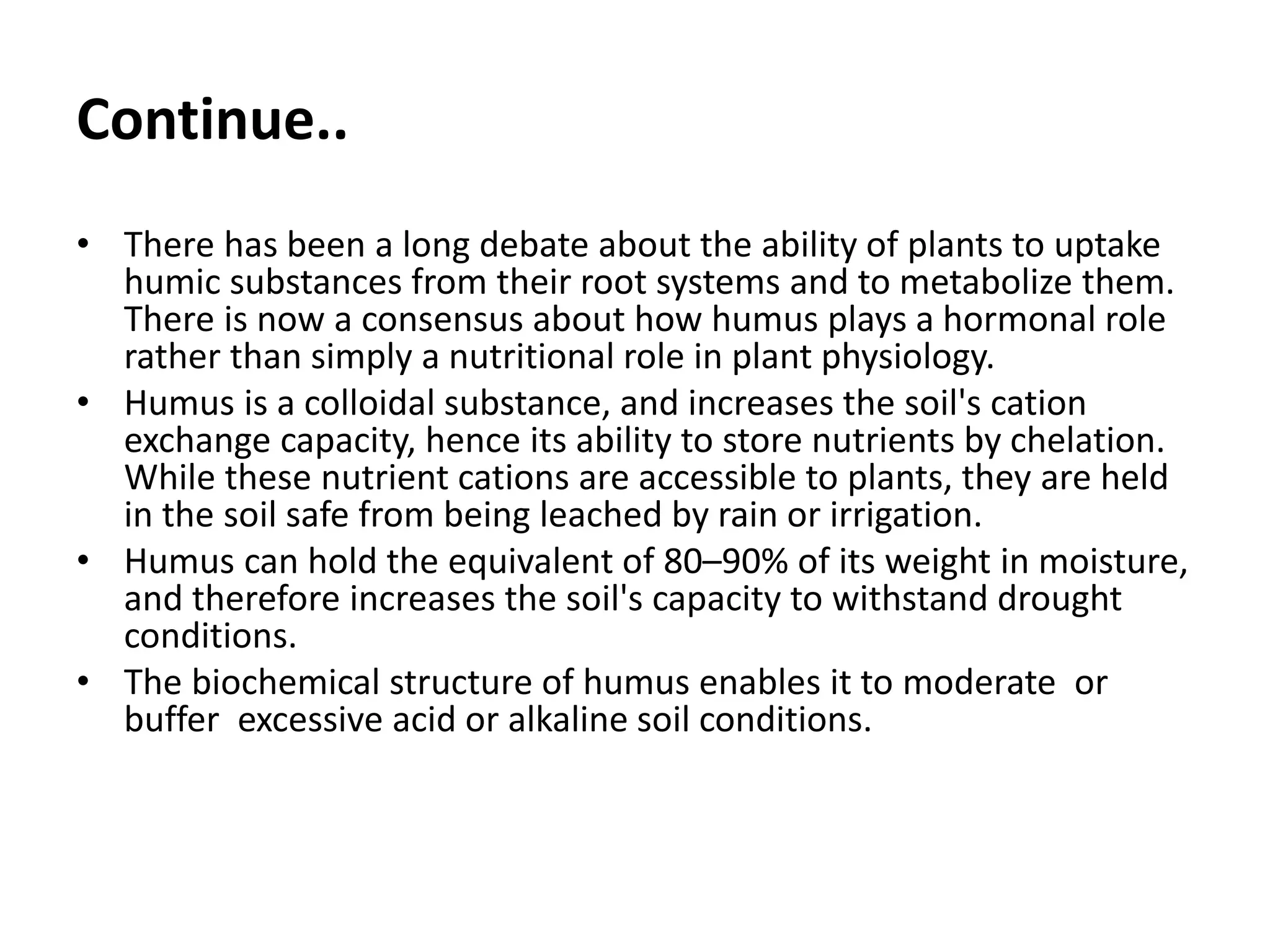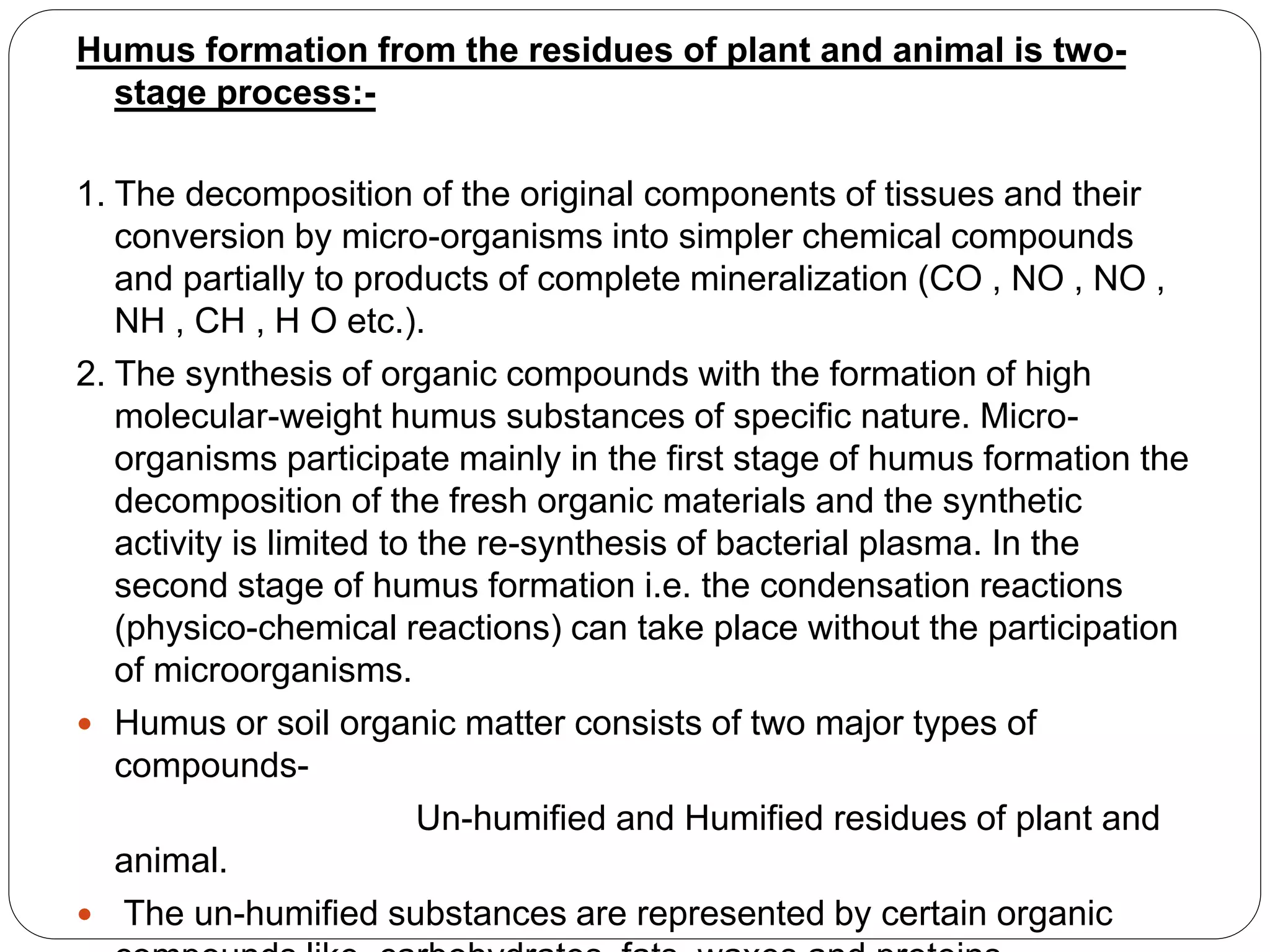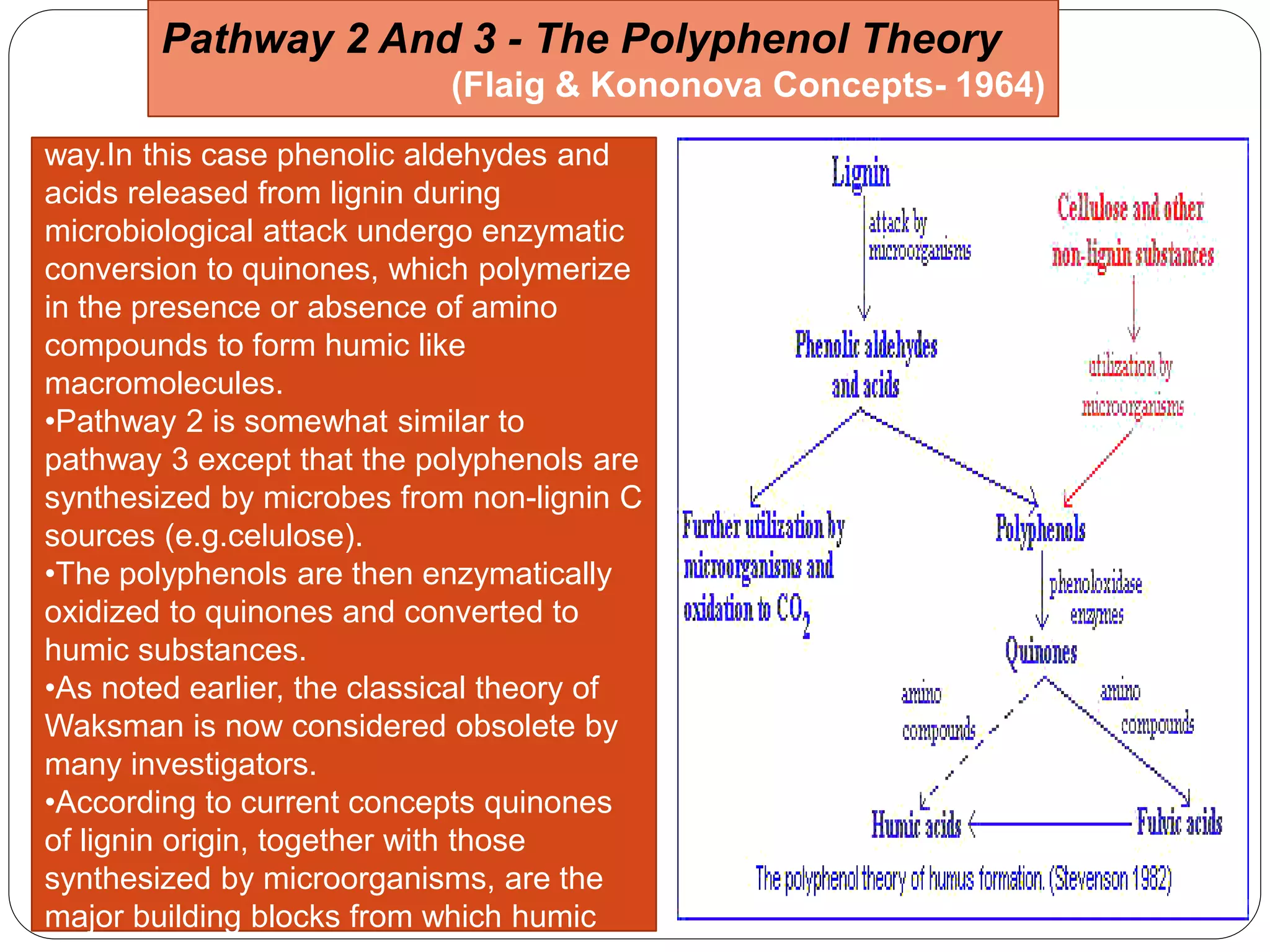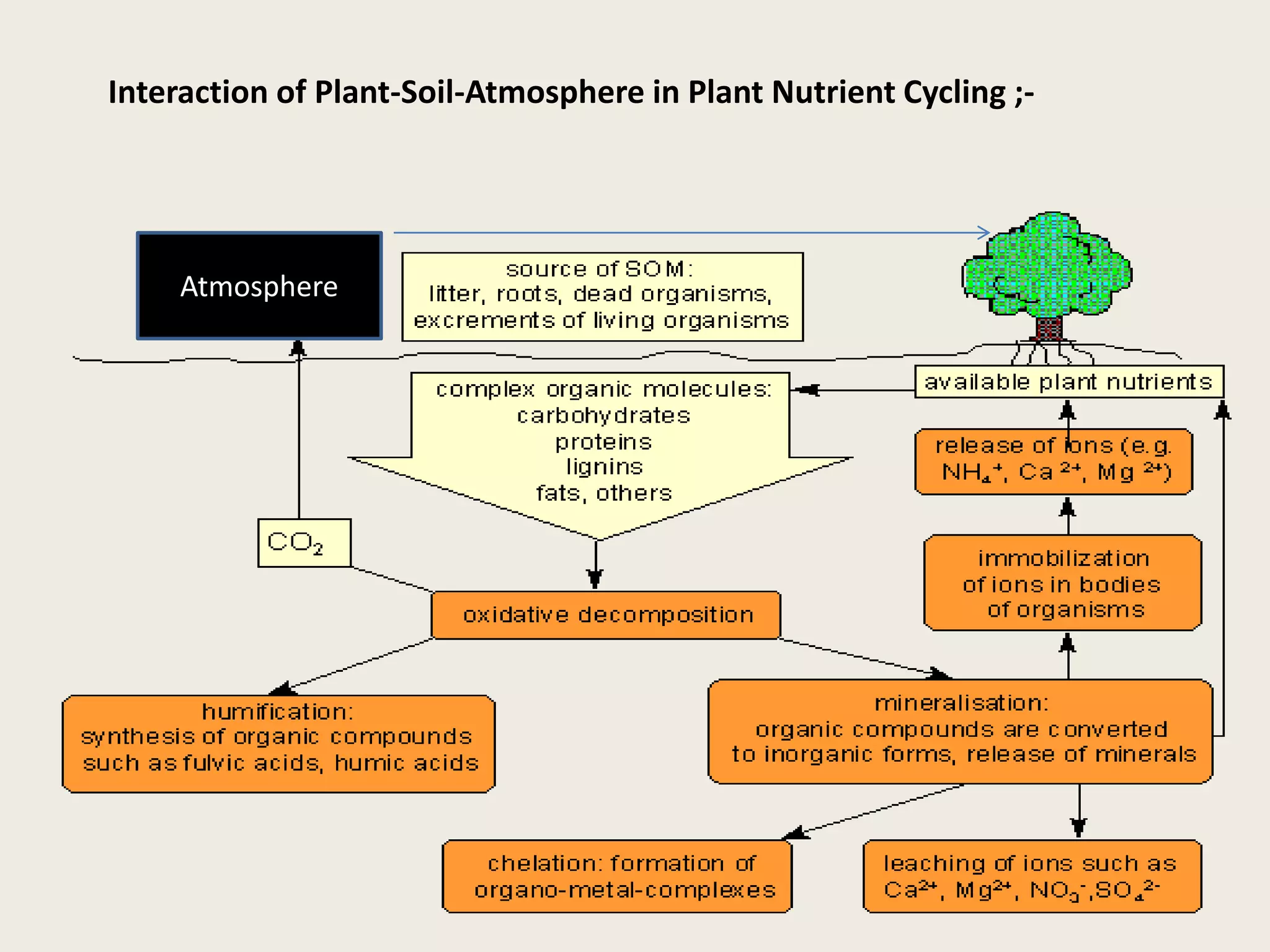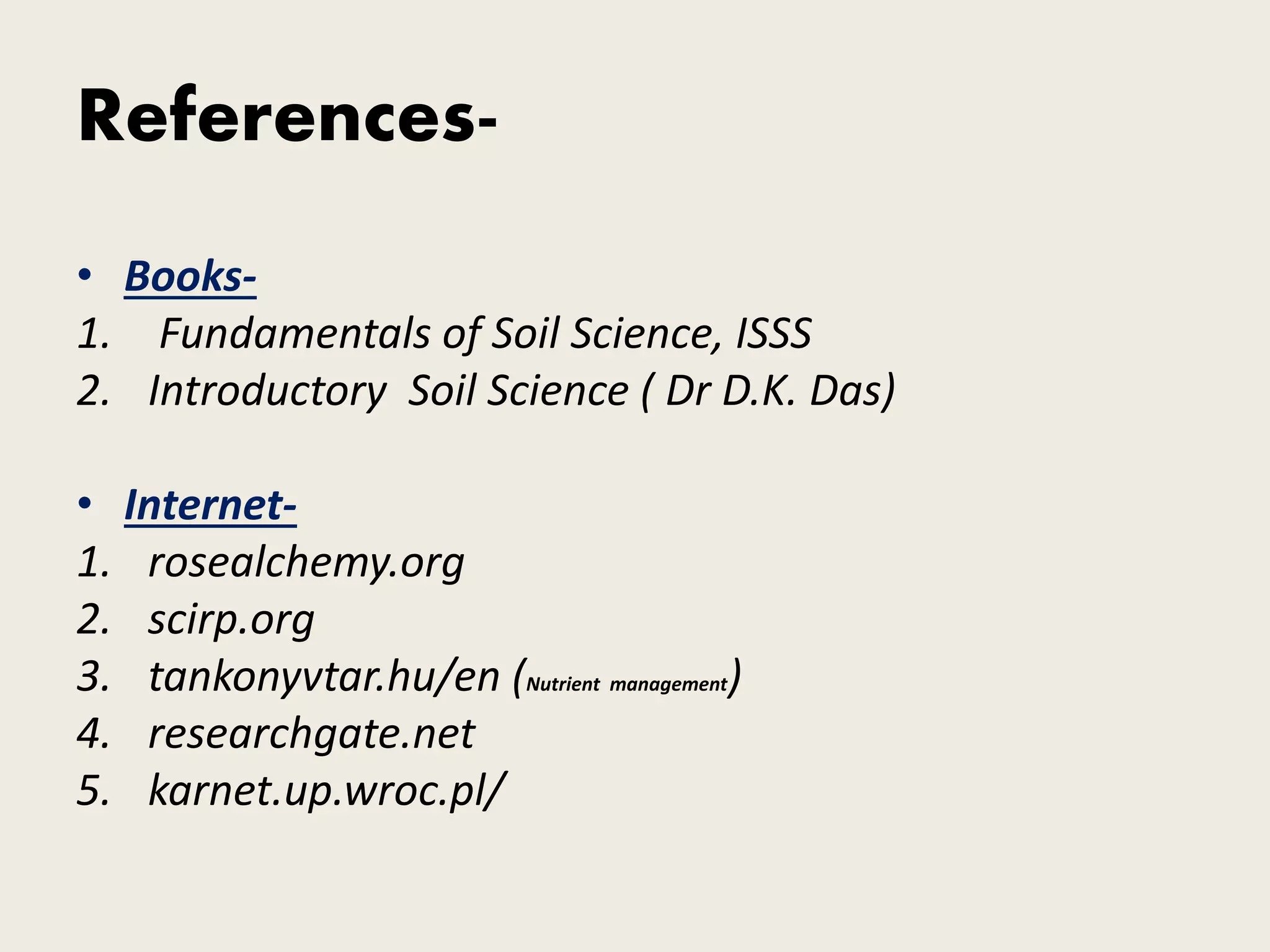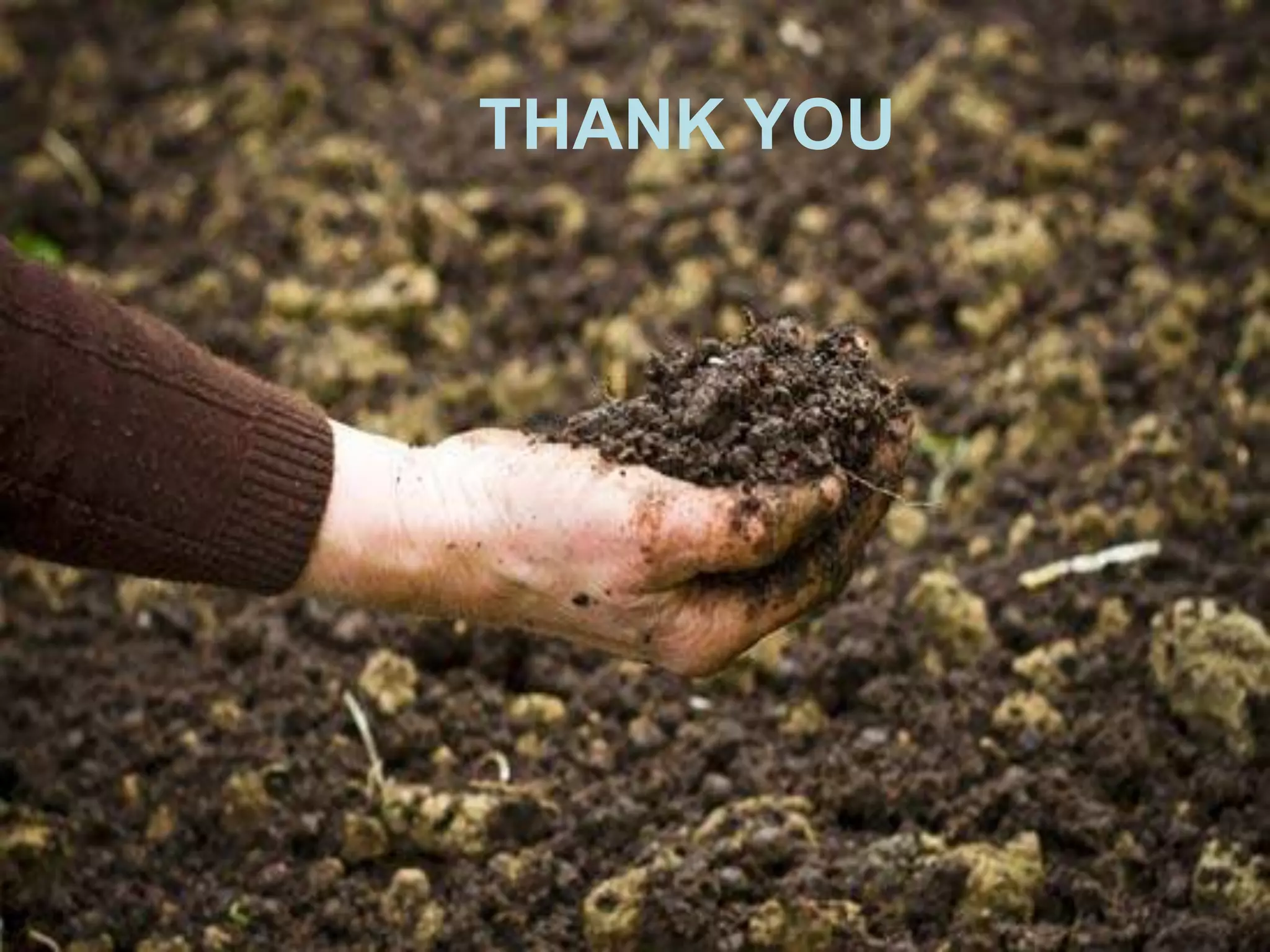This document discusses humus formation and its role in nutrient cycling. It defines humus and explains that it is formed through a complex biochemical process as organic residues in soil are broken down and transformed by microorganisms and chemical reactions. Several theories for humus formation are described, including the lignin-protein theory, polyphenol theory, and sugar-amine condensation. Humus improves soil properties, supports nutrient cycling by holding nutrients, and acts as a reservoir for microbes. It plays an important role in plant nutrient cycles by releasing nutrients as organic matter is decomposed. The document outlines fractionation of organic matter and interactions between plants, soil and the atmosphere in nutrient cycling.
